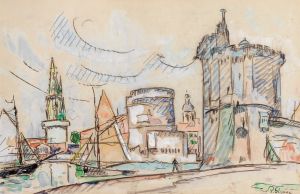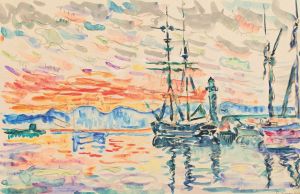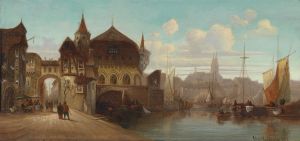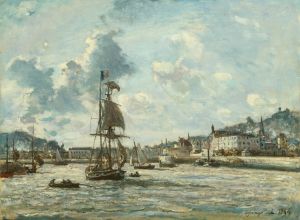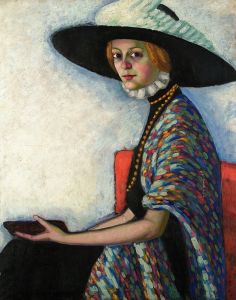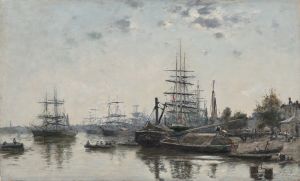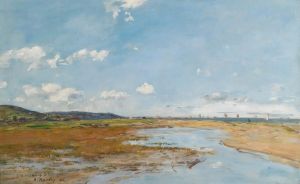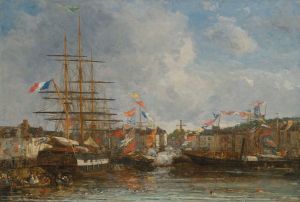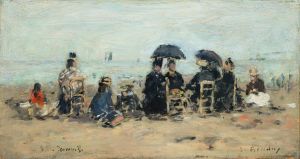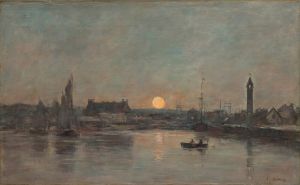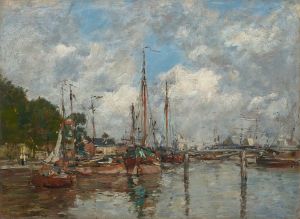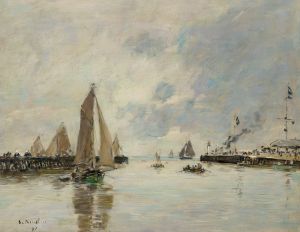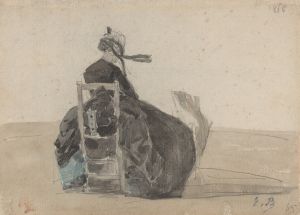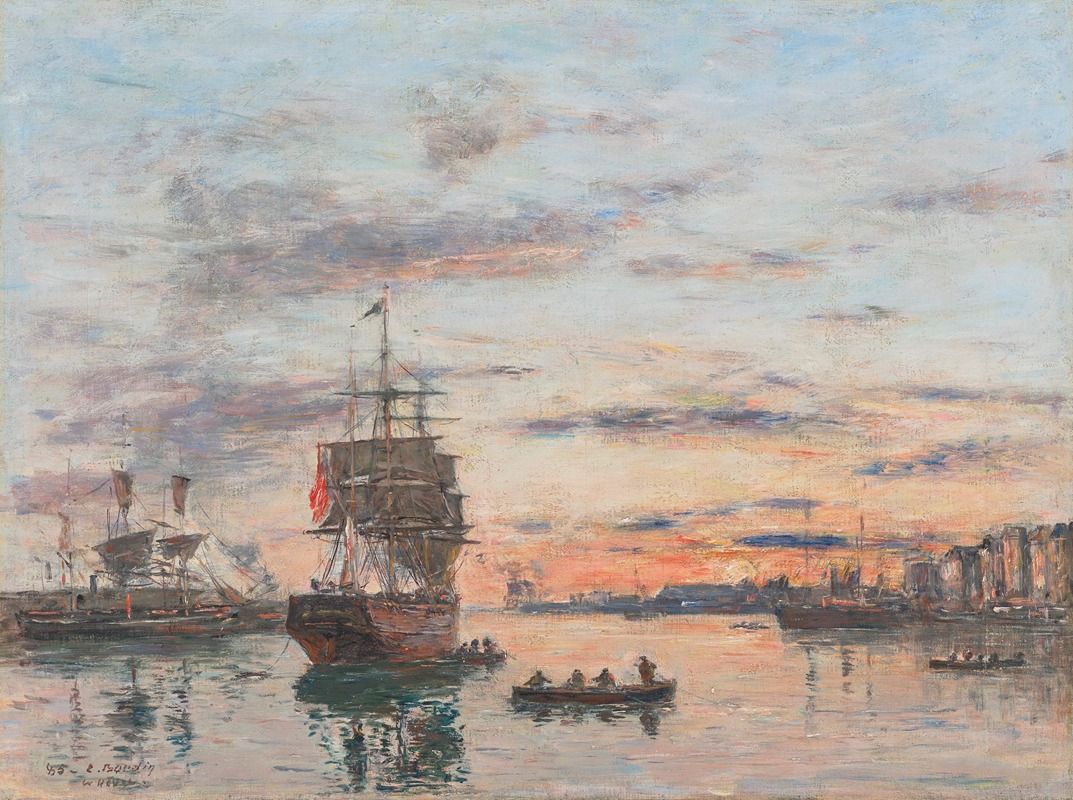
Le Havre. L’avant-port
A hand-painted replica of Eugène Boudin’s masterpiece Le Havre. L’avant-port, meticulously crafted by professional artists to capture the true essence of the original. Each piece is created with museum-quality canvas and rare mineral pigments, carefully painted by experienced artists with delicate brushstrokes and rich, layered colors to perfectly recreate the texture of the original artwork. Unlike machine-printed reproductions, this hand-painted version brings the painting to life, infused with the artist’s emotions and skill in every stroke. Whether for personal collection or home decoration, it instantly elevates the artistic atmosphere of any space.
Eugène Boudin's painting "Le Havre. L’avant-port" is a notable work by the French artist, who is often credited as one of the precursors of the Impressionist movement. Boudin, born in 1824 in Honfleur, France, was renowned for his seascapes and his ability to capture the transient effects of light and atmosphere on the water and sky. This particular painting, "Le Havre. L’avant-port," exemplifies his skill in depicting maritime scenes, a subject that he frequently explored throughout his career.
The painting portrays the outer harbor of Le Havre, a significant port city in Normandy, France. Le Havre was an important center for trade and commerce during the 19th century, and its bustling port provided ample inspiration for Boudin. The composition captures the dynamic environment of the harbor, with ships and boats dotting the water, and the sky above filled with clouds that suggest changing weather conditions. Boudin's use of light and color in this painting is particularly noteworthy, as he employs a palette that reflects the natural hues of the sea and sky, creating a sense of realism and immediacy.
Boudin's technique in "Le Havre. L’avant-port" demonstrates his mastery of plein air painting, a method that involves painting outdoors to directly observe and capture the effects of light and atmosphere. This approach was revolutionary at the time and laid the groundwork for the Impressionists, who would later expand upon these ideas. Boudin's ability to convey the ephemeral qualities of light and weather in his work earned him the admiration of his contemporaries, including Claude Monet, who regarded Boudin as a mentor and significant influence on his own artistic development.
Throughout his career, Boudin remained dedicated to painting the coastal landscapes of Normandy and Brittany, often returning to familiar locations like Le Havre. His works are characterized by their loose brushwork and attention to the subtleties of natural light, qualities that are evident in "Le Havre. L’avant-port." This painting, like many of Boudin's seascapes, captures a moment in time, inviting viewers to experience the serene yet ever-changing environment of the French coastline.
"Le Havre. L’avant-port" is housed in the Musée d'Orsay in Paris, which holds an extensive collection of Boudin's works. The museum's collection provides insight into the evolution of Boudin's style and his contributions to the development of modern art. Boudin's influence on the Impressionist movement and his role in shaping the course of 19th-century French painting are well-recognized, and his works continue to be celebrated for their beauty and technical proficiency.
In summary, Eugène Boudin's "Le Havre. L’avant-port" is a quintessential example of his seascape paintings, showcasing his ability to capture the essence of the natural world with sensitivity and precision. The painting remains an important piece within the context of art history, illustrating Boudin's pivotal role in the transition from traditional landscape painting to the innovative approaches of the Impressionists.





